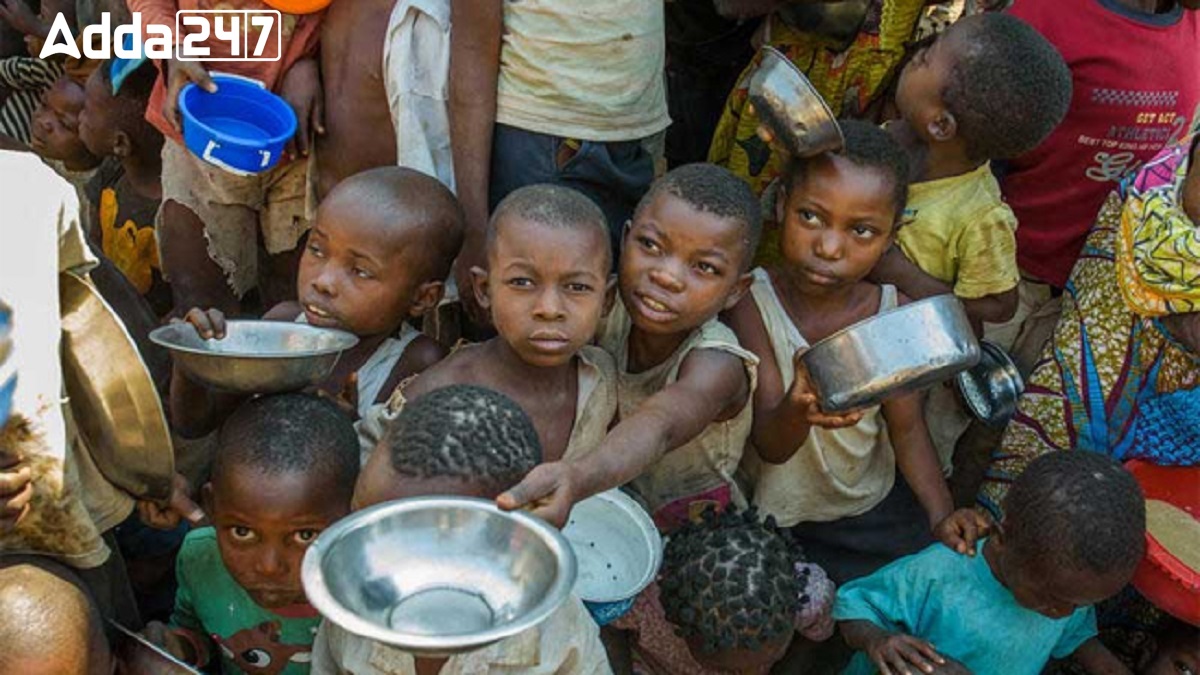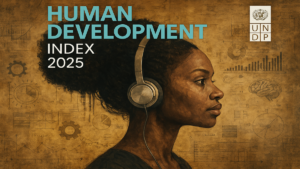The 2024 Global Multidimensional Poverty Index (MPI) report highlights the alarming interconnections between violent conflict and multidimensional poverty across various nations. According to the report, approximately 1.1 billion people live in acute multidimensional poverty, with 455 million residing in conflict-affected regions.
The analysis emphasizes that these areas see higher poverty rates and slower progress in poverty reduction. The report was jointly published by the United Nations Development Programme (UNDP) and the Oxford Poverty and Human Development Initiative (OPHI) and includes updated data from 112 countries and over 1,359 subnational regions.
Key Findings
Child Poverty: Over half (584 million) of the impoverished population are children under 18, indicating a severe impact on the youth, with 27.9% of children living in poverty compared to 13.5% of adults.
Basic Needs: Many poor individuals lack essential resources, including adequate sanitation (828 million), housing (886 million), and cooking fuel (998 million).
Nutrition: Over 637 million people live in households with at least one undernourished individual, with South Asia and Sub-Saharan Africa being significantly affected.
Here is the MPI Value of South Asian countries based on the Multidimensional Poverty Index (MPI) from the 2024 report:
- India: 0.105 MPI value, with 234 million people living in multidimensional poverty (23.8% incidence)
- Pakistan: 0.198 MPI value, with 93 million people living in poverty (38.3% incidence)
- Nepal: 0.092 MPI value, with about 7.5 million people living in poverty (22.5% incidence).
- Bangladesh: 0.104 MPI value, with 41.7 million people living in poverty (24.6% incidence).
Conflict Impact
The report underscores that countries experiencing conflict show significantly higher deprivation across all ten MPI indicators. For instance, over 25% of the poor in conflict-affected areas lack access to electricity compared to just over 5% in stable regions. This disparity is also evident in child education (17.7% in conflict areas vs. 4.4% in stable areas) and nutrition (20.8% in conflict vs. 7.2% in peaceful regions).
Slow Progress
Countries affected by protracted conflict see a reversal or stagnation in poverty reduction. The case study of Afghanistan reveals that 64.9% of the population was impoverished in 2022/23, with 5.3 million more people falling into poverty from 2015/16 to 2022/23. This trend highlights the critical need for resources and interventions in these regions to break the cycle of poverty and conflict.
Global Trends
Since the inception of the MPI in 2010, it has served as an essential tool for identifying vulnerable populations. The report reflects on the achievements and ongoing challenges in poverty reduction, emphasizing the urgent need for investment in peace to effectively address poverty.
Indicators and cutoffs
| Dimension | Indicators | Deprivation Cutoffs |
|---|---|---|
| Health | Child mortality | Deprived if a child under the age of 18 years has died in the family in the five years preceding the survey. |
| Nutrition | Undernourishment | Deprived if any adult or child, for whom there is nutritional information, is undernourished. |
| Education | Years of schooling | Deprived if no household member has completed six years of schooling. |
| School attendance | Deprived if no household member aged ‘school entrance age + six’ years or older has completed six years of schooling. | |
| Standard of Living | Cooking fuel | Deprived if the household cooks with dung, wood, or charcoal. |
| Sanitation | Deprived if the household’s sanitation facility is either not improved (according to MDG guidelines), is shared with other households, or both. | |
| Drinking water | Deprived if the household does not have access to improved drinking water (according to MDG guidelines) or improved drinking water is more than a 30-minute walk from home. | |
| Electricity | Deprived if the household has no electricity. | |
| Housing | Deprived if at least one of the three housing materials for roof, walls, and floor are inadequate: the floor is of natural materials and/or the roof and/or walls are of natural or rudimentary materials. | |
| Assets | Deprived if the household does not own more than one of these assets: radio, TV, telephone, computer, animal cart, bicycle, motorbike, or refrigerator and does not own a car or truck. |
Fictional Example: Country X
| Indicator | Weight | Person A | Person B | Person C |
|---|---|---|---|---|
| 1 | 1/6 | 0% | 0% | 0% |
| 2 | 1/6 | 0% | 0% | 0% |
| 3 | 1/6 | 100% | 100% | 0% |
| 4 | 1/6 | 0% | 100% | 0% |
| 5 | 1/18 | 0% | 100% | 100% |
| 6 | 1/18 | 0% | 100% | 100% |
| 7 | 1/18 | 0% | 0% | 100% |
| 8 | 1/18 | 100% | 100% | 100% |
| 9 | 1/18 | 100% | 0% | 100% |
| 10 | 1/18 | 100% | 0% | 0% |
| Weighted Score | 33.33% | 50.00% | 27.78% | |
| Status | MPI poor (≥ 33%) | MPI poor (≥ 33%) | Not MPI poor (< 33%) |
MPI Calculations for Country X
- Factor H:
H=1+1+03=0.667H = \frac{1 + 1 + 0}{3} = 0.667 - Factor A:
A=33.33%+50.00%2=0.417A = \frac{33.33\% + 50.00\%}{2} = 0.417 - MPI for Country X:
MPI=0.667×0.417=0.278\text{MPI} = 0.667 \times 0.417 = 0.278




 India's Progress in Human Development In...
India's Progress in Human Development In...
 CareEdge State Rankings 2025: Maharashtr...
CareEdge State Rankings 2025: Maharashtr...
 Top 10 Most Expensive Cities To Live Aro...
Top 10 Most Expensive Cities To Live Aro...







